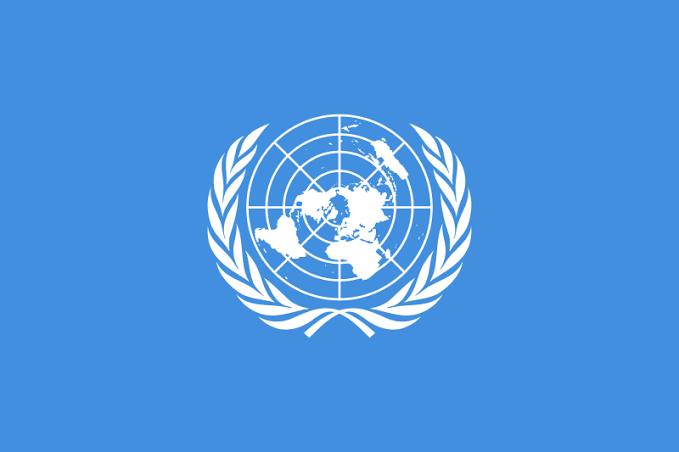- Economy
- Education And Career
- Companies & Markets
- Gadgets & Technology
- After Hours
- Healthcare
- Banking & Finance
- Entrepreneurship
- Energy & Infra
- Case Study
- Video
- More
- Sustainability
- Web Exclusive
- Opinion
- Luxury
- Legal
- Property Review
- Cloud
- Blockchain
- Workplace
- Collaboration
- Developer
- Digital India
- Infrastructure
- Work Life Balance
- Test category by sumit
- Sports
- National
- World
- Entertainment
- Lifestyle
- Science
- Health
- Tech
WHO Releases New Guidelines To Improve Testing, Diagnosis Of STIs
On Monday WHO in a statement said that during the COVID-19 pandemic, many countries had reported low coverage for prevention, testing and treatment services for STIs, which has led to a resurgence of STIs globally
Photo Credit :

With sexually transmitted infections (STIs) on the rise, WHO is calling for better access to testing and diagnostic services. The WHO will also soon discuss its latest STI research agenda and antimicrobial resistance (AMR) in gonorrhoea.
On Monday WHO in a statement said that during the COVID-19 pandemic, many countries had reported low coverage for prevention, testing and treatment services for STIs, which has led to a resurgence of STIs globally.
Countries with good STI surveillance, such as the United States of America and United Kingdom, are reporting increasing STIs. Emerging outbreaks of new infections, such as mpox, and the re-emergence of neglected STIs pose challenges for prevention and control efforts.
Several countries are increasingly reporting failures of current treatment recommendations for gonorrhoea. Of concern, the spread of a Neisseria gonorrhoea clone that is highly resistant to ceftriaxone is increasingly being reported in countries in Asia such as China, Japan, Singapore and Vietnam as well as in Australia, Austria, Canada, Denmark, France, Ireland and the United Kingdom.
The enhanced gonorrhoea AMR surveillance (EGASP) suggests high rates of resistance in gonorrhoea to current treatment options such as ceftriaxone, cefixime and azithromycin in Cambodia, for instance. Syphilis, as well as congenital syphilis, are on the rise, and the lack of benzathine penicillin poses a considerable challenge to effectively treat them.
New WHO guidance on testing and laboratory diagnostics
Every day, more than 1 million new sexually transmitted infections (STIs) are acquired, posing a significant global health challenge. However, monitoring and understanding the trends of new STIs in low- and middle-income countries (LMIC) are hindered by limited access to diagnostic tests. “Early testing and diagnosis are key in stopping the spread of STIs. When left untreated, certain STIs can lead to long-term irreversible outcomes and some can be potentially fatal," said Dr Teodora Wi, Lead for Sexually transmitted infections of the WHO Global HIV, Hepatitis and STIs Programmes. “Our new guidance can help make low-cost point of care tests for STIs more accessible, enabling improved data collection and quality delivery of STI services for people in need," Dr Wi added.
WHO’s new guidance includes target product profiles (TPPs) for point-of-care diagnostic technologies for diagnosing syphilis (treponema pallidum), Chlamydia trachomatis, Neisseria gonorrhoeae and Trichomonas vaginalis, which aim to facilitate development of quality STI diagnostics.
TPPs help to ensure that products are designed and manufactured to meet the clinical needs of populations at risk and are “fit-for-use” -- meaning they are safe, effective and adapted to the use environment. Point-of-care tests can lower health-care costs, reduce waiting times, speed up initiation of and increase the accuracy of treatment, and improve patient follow-up.
A new fourth edition of the Laboratory and point-of-care diagnostic testing for STIs including HIV provides up-to-date information on how to isolate, detect, and diagnose STIs, including HIV. The scope of the manual has been expanded to include information on the use of molecular tests, rapid point-of-care tests, and quality management of diagnostic tests.
A new product on the Diagnostics Landscape for Sexually Transmitted Infections (STIs) highlights diagnostics available to support scale-up of screening for syphilis, chlamydia, gonorrhoea, trichomoniasis, mycoplasma, herpes, and human papillomavirus (HPV) to meet the growing test demands in low-and-middle income countries. It complements the aforementioned manual.
“New models of STIs services need to be resilient and adaptive to current and future threats," said Dr Meg Doherty, Director of WHO’s Global HIV, Hepatitis and Sexually Transmitted Infections Programmes. “Recent scientific advances in STIs treatment and technologies, and innovative service delivery methods, provide an important opportunity to end STIs as a public health concern by 2030. However, large variations in investment, maturity and performance of STI surveillance systems between countries continues to be a challenge," Dr Doherty added.
The 75th World Health Assembly (in May 2022) approved the implementation of the new Global Health Sector Strategies on, respectively, HIV, viral hepatitis and sexually transmitted infections for the period 2022-2030 (GHSS), which provides strategic directions to address current challenges in STI control.
